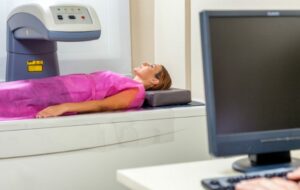Injury Prevention in Children & Adults
At Vision XRAY, we are witness to the results of many an accident and injury. We image broken or fractured bones, scan for internal problems, and more.

Injury Prevention in Children & Adults
At Vision XRAY, we are witness to the results of many an accident and injury. We image broken or fractured bones, scan for internal problems, and more. Unfortunately, injury is an all too common concern. According to the Australian Institute of Health and Welfare, in the span of a year (2011-2012) nearly 500,000 people were hospitalised in Australia due to an injury. That statistic has continued to rise by approximately 1% every year. Accidents happen, but ideally, you can avoid injury altogether. Common sense and taking the right precautions can ensure safety and health for you and your family. Here are some tips for preventing injuries in adults and children.
What is Injury?
In the medical sense, injury is defined as damage to the body. This bodily harm can result from accidents, falls, weapons, and more. Common injuries include fractures, sprains, strains, burns, or wounds (injuries which break the skin or other tissues). Injuries can occur in a wide variety of situations. While accidents and incidents are not 100% preventable, you can take steps to avoid injury, refrain from placing yourself in dangerous situations, and minimise your risks as much as possible.
General Precautions
Life is not risk free. Outdoor adventures, sports, and even riding in a car all pose a threat to our safety. The key is being as safe and smart as possible about protecting ourselves.
In every situation, take advantage of any safety measures already in place. This is easy to do, like wearing your seatbelt when driving or riding in a vehicle. Whenever you are near a street, it’s paramount to follow the “rules of the road”, whether you’re in the vehicle, on a bicycle, or walking as a pedestrian. Remaining alert and attentive to road signs, signals, and traffic can mean the difference between injury and safety. When participating in sporting events or activities, be sure to wear the proper protective gear. Cyclists, for instance should always wear a helmet as head injuries can be fatal.
Keeping Children Safe
Injury may be even more of a concern for children, with a higher incidence of preventable injuries occurring in younger age groups than any other demographic. Fortunately, parents can take action to keep their kids safe. “Child-proofing” a house with young children is important. This includes keeping dangerous items out of reach and placing locks on cabinets and drawers containing any hazards. Gates can help keep young children from inadvertently falling down stairs or entering unsafe areas. When riding in vehicles, children should be securely strapped into age-appropriate safety seats. If you have a swimming pool, you will need to take extra precautions. Drowning is a leading cause of death for young children in Australia, but it is entirely preventable. For more ways to prevent child injury, refer to Kidsafe, the Child Accident Prevention Foundation of Australia.
Advice for Older Australians
For older adults, one of the greatest causes of injury is falling. In 2011-2012, 96,385 older Australians were hospitalised due to experiencing a fall. Older adults can protect themselves in a few ways. First, adults should have regular health checkups with a physician. Your physician can assess any medications you take, as some of these can contribute to dizziness and a loss of balance. It will be important to know which of your medicines may cause such problems. Second, older adults should strive to exercise frequently. This is a great way to maintain strength and balance: key components to preventing a fall and reducing the impact of injury. Lastly, older adults and their families can take action to make their homes safer. To avoid falls, keep the floor uncluttered and remove items which could pose a tripping hazard. Install handrails inside the shower and next to the toilet to make manoeuvring that much easier. Place hard to reach items in lower cabinets so that a step stool is not necessary to reach them. In addition, consider putting more lighting (or brighter bulbs) into your home to make it easier to see any potential dangers.
With these precautions, you and your loved ones will be at a lower risk of experiencing an injury. Stay safe!
Read our articles and FAQs
We’re delighted to provide updates on the latest medical imaging technology and answer your most frequently asked questions about our services.









